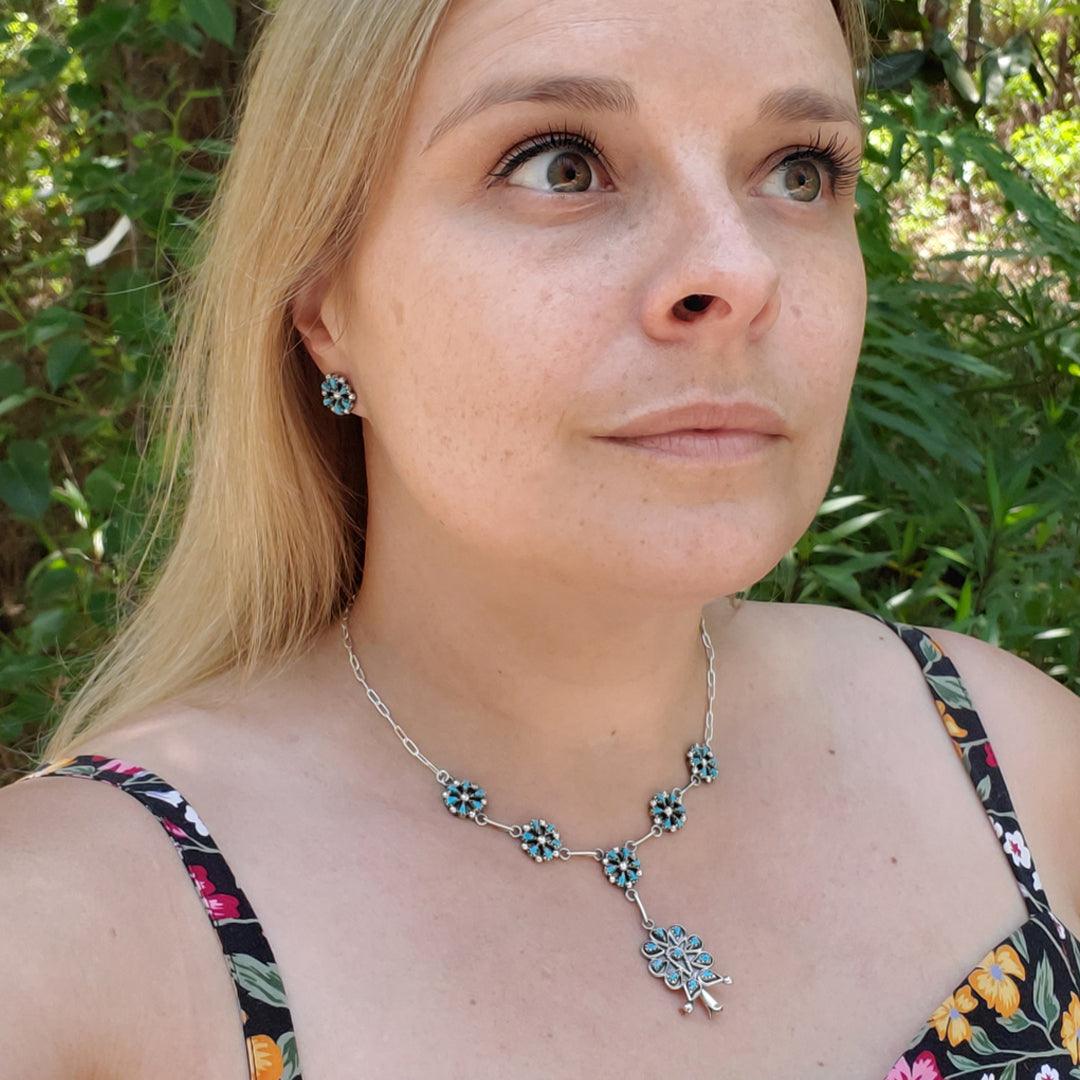Turquoise
Stone of Protection, Wholeness, Self-Forgiveness, Emotional Soothing and Healing, Compassion, Truth, Pure Communication and Expression, Acceptance

Turquoise is a hydrous phosphate mineral of copper and aluminum. Turquoise is often found as an aggregate of microcrystals, with inclusions of host rock scattered throughout seen in a matrix. Its submicroscopic crystals make the stone opaque. It owes its sky-blue to greenish-blue colors to the presence of copper and aluminum in its atomic structure. The less copper and aluminum, the more iron or zinc, and the Turquoise will be more green and yellow and become less desirable. The most preferred forms of Turquoise are of the true sky blue color (Robin’s Egg Blue) that polishes to a high luster and exhibits greater durability. Turquoise forms best in arid climates where sizeable deposits of copper are prevalent. This limits the geography of Turquoise sources to the Southwestern United States, China, Chile, Egypt, Iran, Tibet, Australia, Afghanistan, and Mexico. As rainfall trickles through the rock and soil, small amounts of copper begin to dissolve. Upon evaporation of this water, the copper combines with aluminum and phosphorus to produce tiny deposits of Turquoise along the fracture walls. Turquoise can sometimes replace the rock that comes into contact with this water solution and when this happens matrices can be seen throughout the Turquoise. When the replacement is incomplete, a matrix will show as a spider web or patchy design. If the replacement is complete, a solid mass of Turquoise will result. Some Turquoise mines produce stones with very specific characteristics and the trained eye can begin to associate the stone with the source. For example, The Sleeping Beauty Mine is known for its light blue Turquoise with no matrix, whereas the Kingman Mine produces bright blue Turquoise with a spider web black matrix. The Morenci Mine produces dark blue Turquoise with pyrite in its matrix, while the Bisbee Turquoise produces brilliant blue stones within a brown matrix. Turquoise is not very hard and must be treated with care when worn as jewelry, and it is in the jewelry industry that Turquoise has always held its place. Turquoise may be the longest-used of all gemstones with its history dating as far back as 5,000 years ago. The word “Turquoise” comes from the French word pierre turquoise, meaning “Turkish Stone”, as this gem traveled through Turkish bazaars by Venetian merchants to make its way across Europe on the early artisan trade routes. Its use in jewelry and decorations has transcended cultures and eras and Turquoise is held in high regard by many people across the globe. Different types of Turquoise exist that undergo different treatments to either promote durability or appearance. Natural Untreated Turquoise is the most valued form in the jewelry world. Stabilized Turquoise, the most common type on the market today, has a polymer binding agent added to the stone increasing its durability during the cutting process. Stabilized Turquoise is accepted in the industry because the demand for untreated turquoise currently outweighs the supply. Composite Turquoise has a polymer mixed in with finely crushed pieces of Turquoise that go on to being cast into block shapes. Interestingly enough, because Turquoise is porous, it has the ability to accept dye and Dyed Turquoise is the last type of Turquoise found on the market. Viewed as a protective amulet that brings good fortune, Turquoise is desired by people worldwide for its beauty and beneficial properties.

Metaphysical
Turquoise has a soothing effect on the emotional body and reminds the wearer of self-forgiveness and self-compassion. Beneficial to one’s well-being, Turquoise stimulates truth and puts words to intention. Turquoise activates the throat chakra subtly stimulating our most internal desires and needs while promoting clear, concise communication of our feelings. Turquoise has a sedative, calming effect on our emotional centers and can bring us back into focus with our hearts, bringing us back into Divine Truth. Turquoise can teach that all parts of our self are important and wholesome, even those times we made mistakes or felt like we were lacking. Turquoise reminds us that all experiences are worthy and to embrace the totality of who we are. Turquoise in this manner can help bring about a renewed sense of self-worth. Accepting ourselves totally for who we are helps us accept others for who they are as well. Turquoise is a beneficial stone for social environments as it aids communication, truth, and purity of expression, and brings our individual selves back to a place of healing oneness. Turquoise represents wisdom, peace, tranquility, wholeness, and acceptance. Turquoise symbolizes unity, as it represents the Storm element, unifying all elements together into one. Turquoise has been revered for thousands of years, aiding those that choose to adorn themselves with it with good fortune and protection from dark entities.
CHAKRA
- 5th - Throat - Vishuddha
ELEMENT
- Storm
PARTNER STONES
Gem Silica, Shattuckite, Chrysocolla, Ajoite, Malachite, Azurite, Calcite, Smithsonite, Hemimorphite, Larimar

Science Stuff
• Chemical Formula: CuAl6(PO4)4(OH)8·4H2O
• Color: Sky Blue to Blue/Yellow Green
• Hardness: 5-6
• Crystal Habit: Triclinic
• Refractive Index: 1.61-1.65
• Specific Gravity: 2.5-2.9
• Optic Character: Biaxial (+)
• Transparency: Opaque
• Double Refraction: 0.04
• Luster: Subvitreous to Waxy
• Fracture: Conchoidal
• Cleavage: Perfect,
• Mineral Class: Phosphates
Shop This Gemstone
Turquoise
Blog Resources
• “Turquoise”, Simmons, Robert, et al. The Book of Stones: Who They Are and What They Teach, North Atlantic Books, 2015.
• “Turquoise”, Hobart M. King, <https://geology.com/minerals/turquoise.shtml>
Read more

Tourmaline is a group of complex borosilicate minerals that crystallize in the hexagonal crystal system. Tourmaline is found in a wide variety of colors, including pink, red, green, blue, black, an...
Read more







